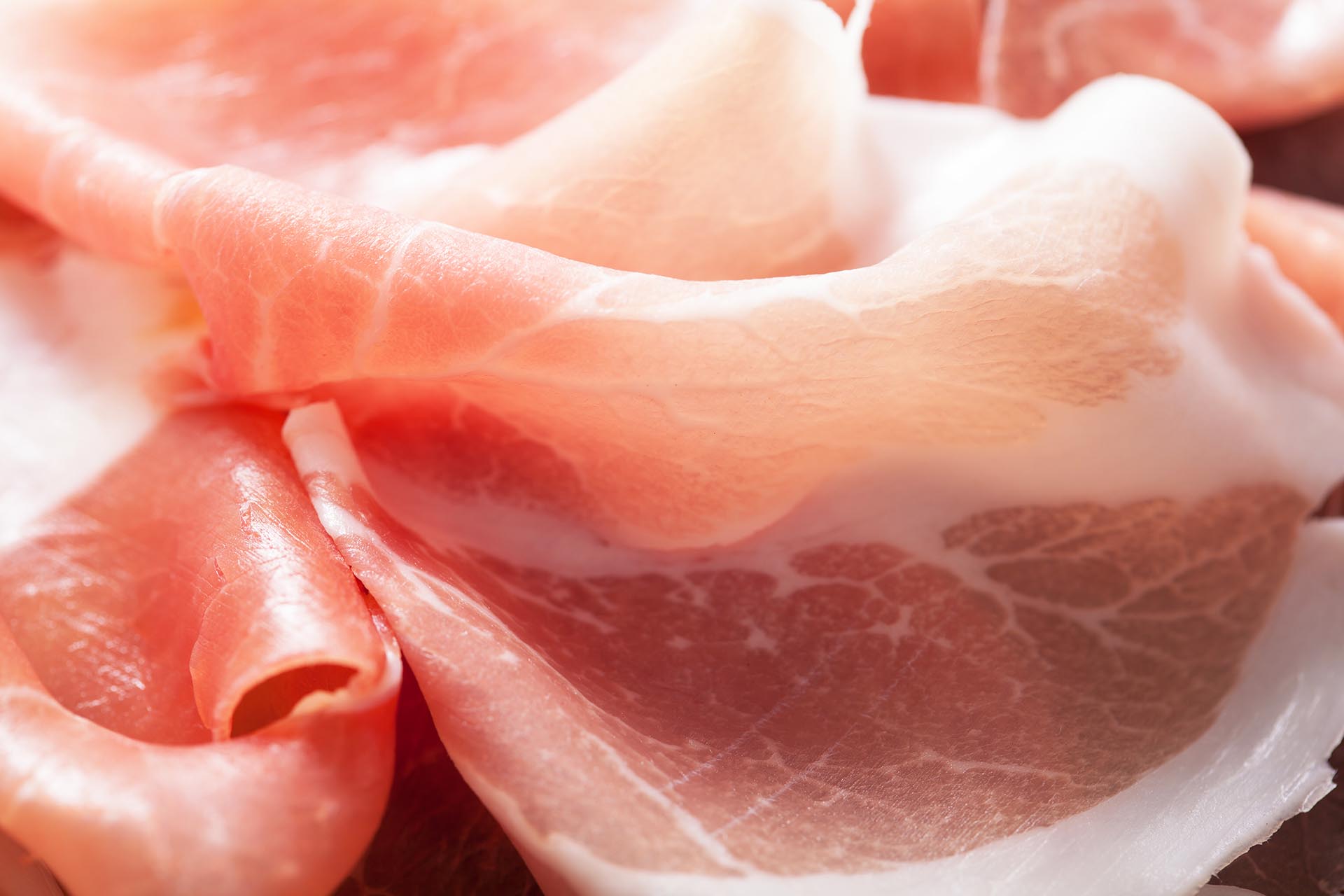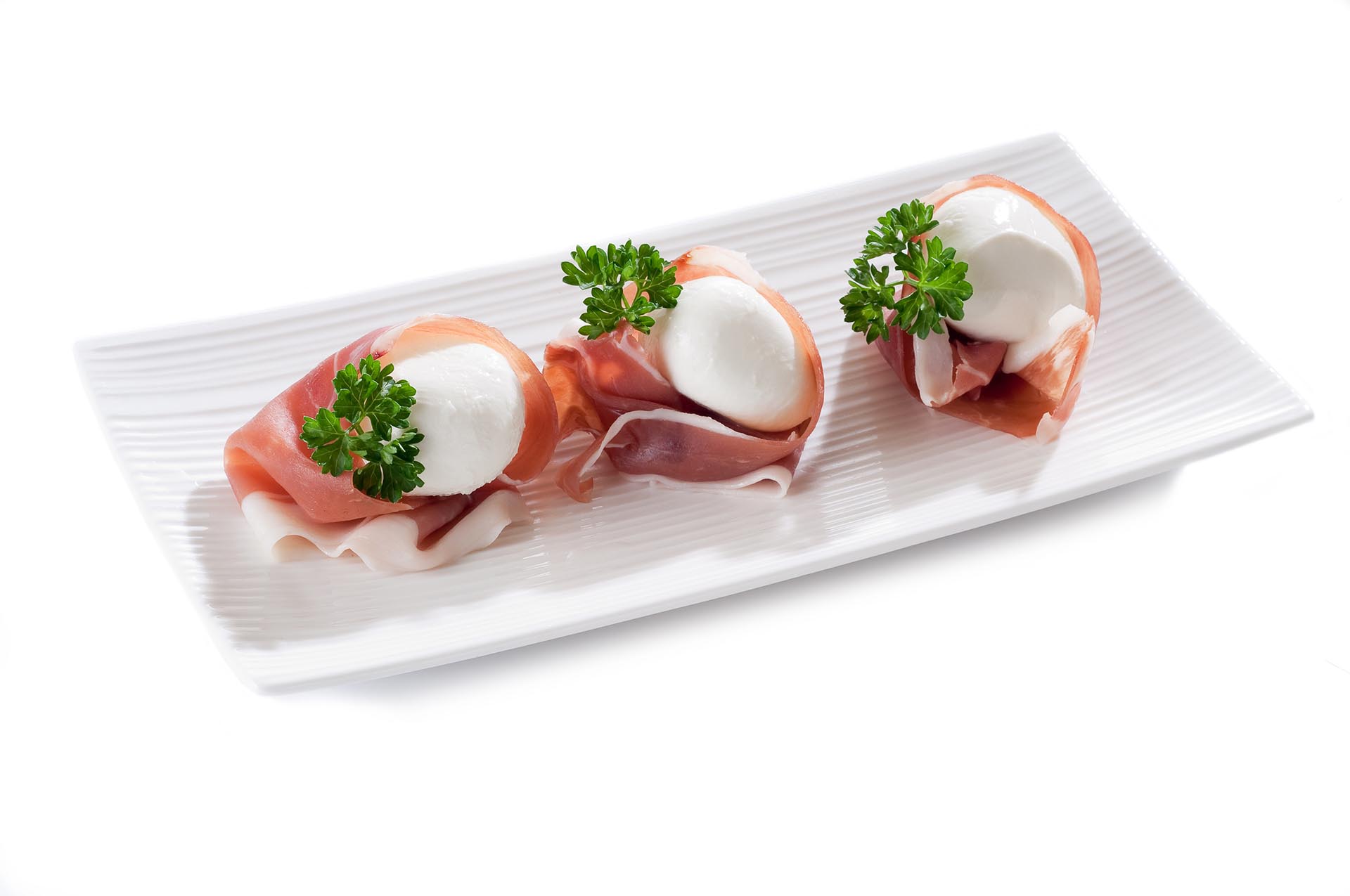Sensorial Analysis
The taste of Parma ham begins with the product and arrives to the single slice. The product has a pear shape, the yellow and compact fat covers the low-fat that is covered by “sugna”. The cotenna skin is uniform. When the product is ready to be sliced, the fat is white and marked by light pink stripes. The meat has a homogeneous rose-red color.
Each slice is damp and not shiny. At the centre there should be a small portion of white fat (where the femoral vein passes). Consistency must be soft. For a better analysis, the slice is put in a white plate. The real taste begins with an olfactory analysis: the fragrance of a good ham must be fragrant, exquisite, sweet, aromatic. The typical fragrance of the aged meat.
Then, one continues with the taste of the slice, savoring slowly, in order to involve each receptive area of the tongue. In this way, one can evaluate the presence and intensity of the flavor: sweet, a little bit salted, fresh and harmonious, pungent in the throat.
The structure of the ham is based on the resistance of the slice during chewing that must be not relevant. The ham, if it is of high quality, must give a tactile sensation of softness and meltiness. It must not dry out.
When the slice has been swallowed, one closes the mouth and exhale from the nose, to identify the aromatic sensations after taste. Pay attention to the intensity and persistence of the slice. It must be of a cured meat aroma and red fruits.
 Area schematic perceptive language
Area schematic perceptive language









